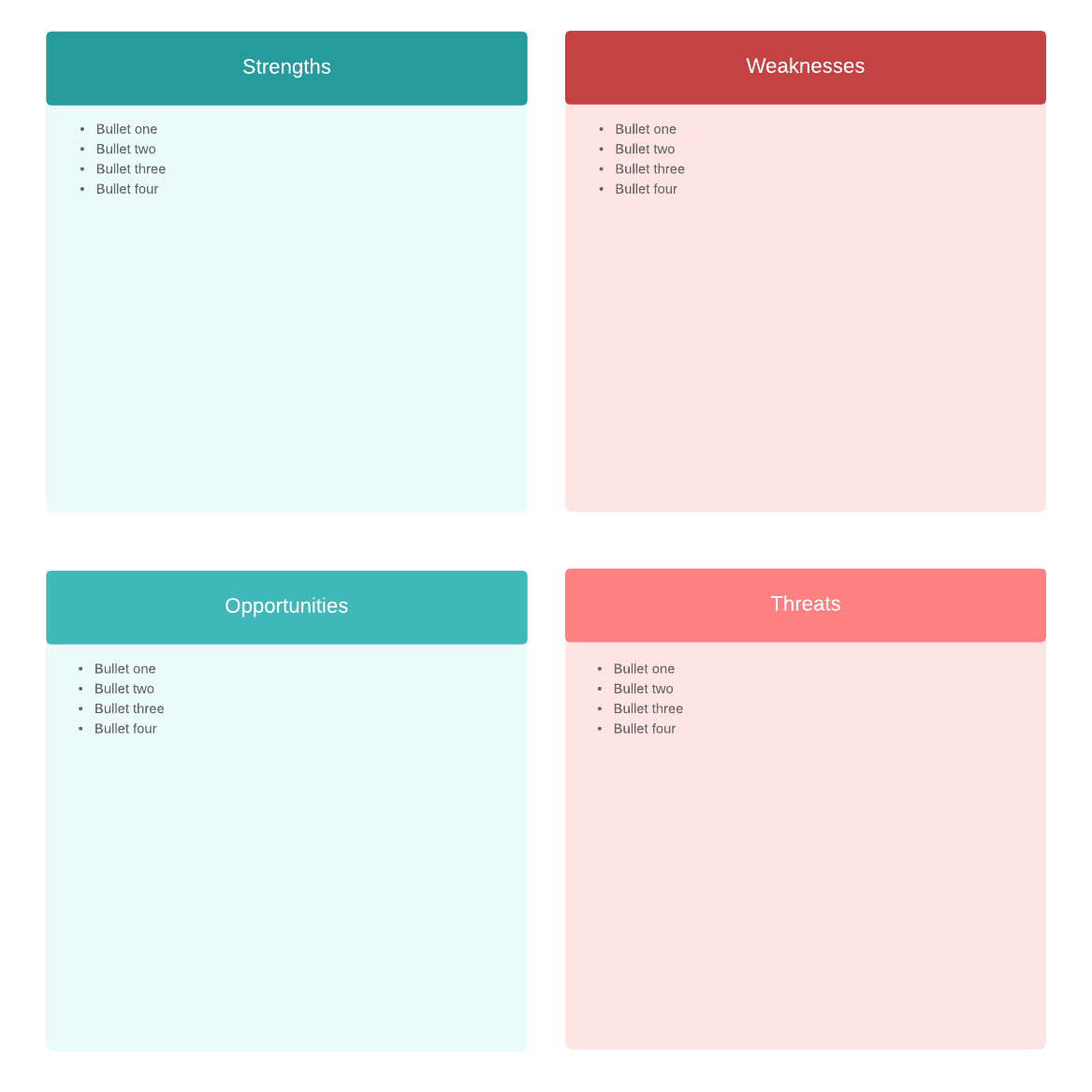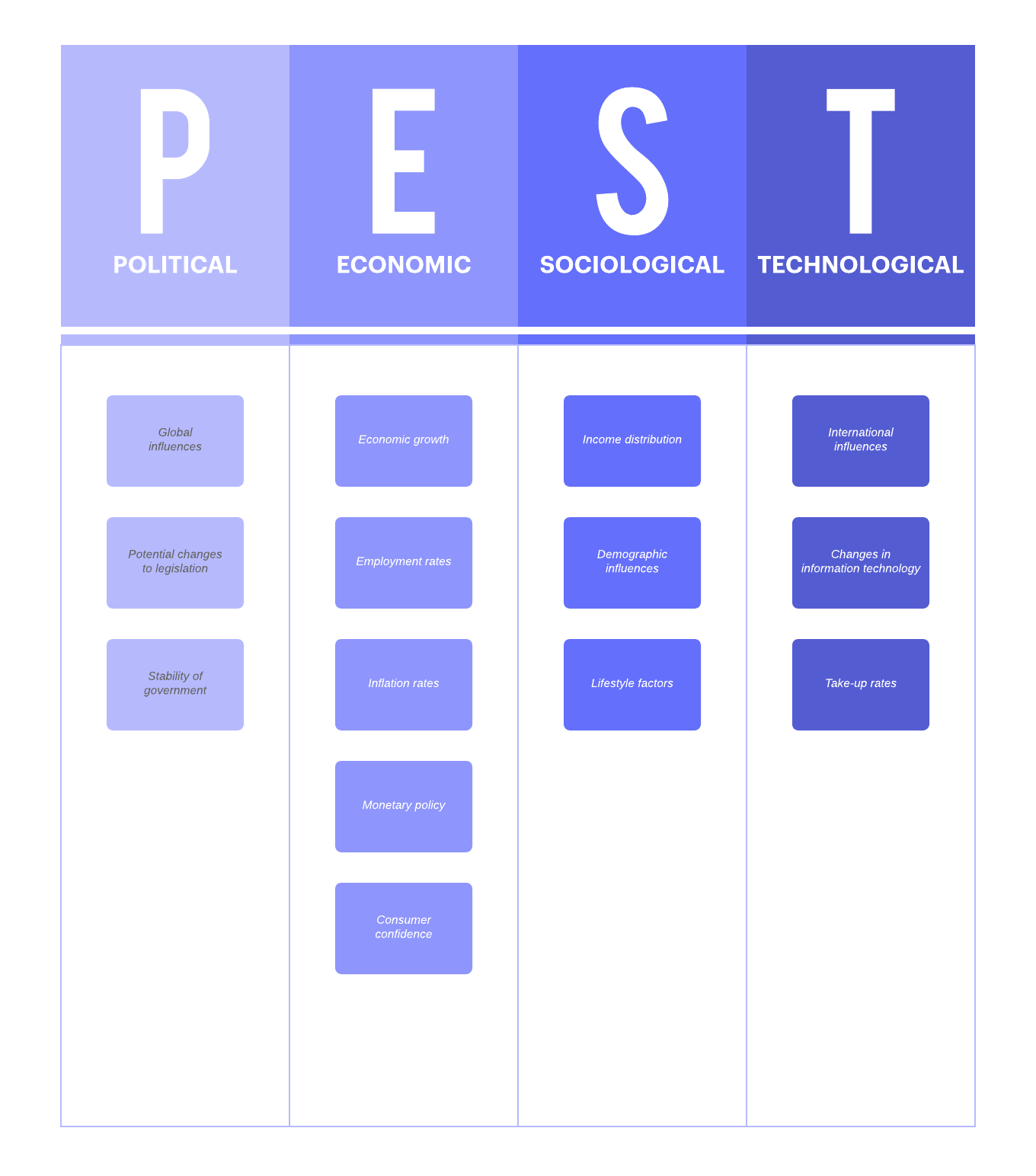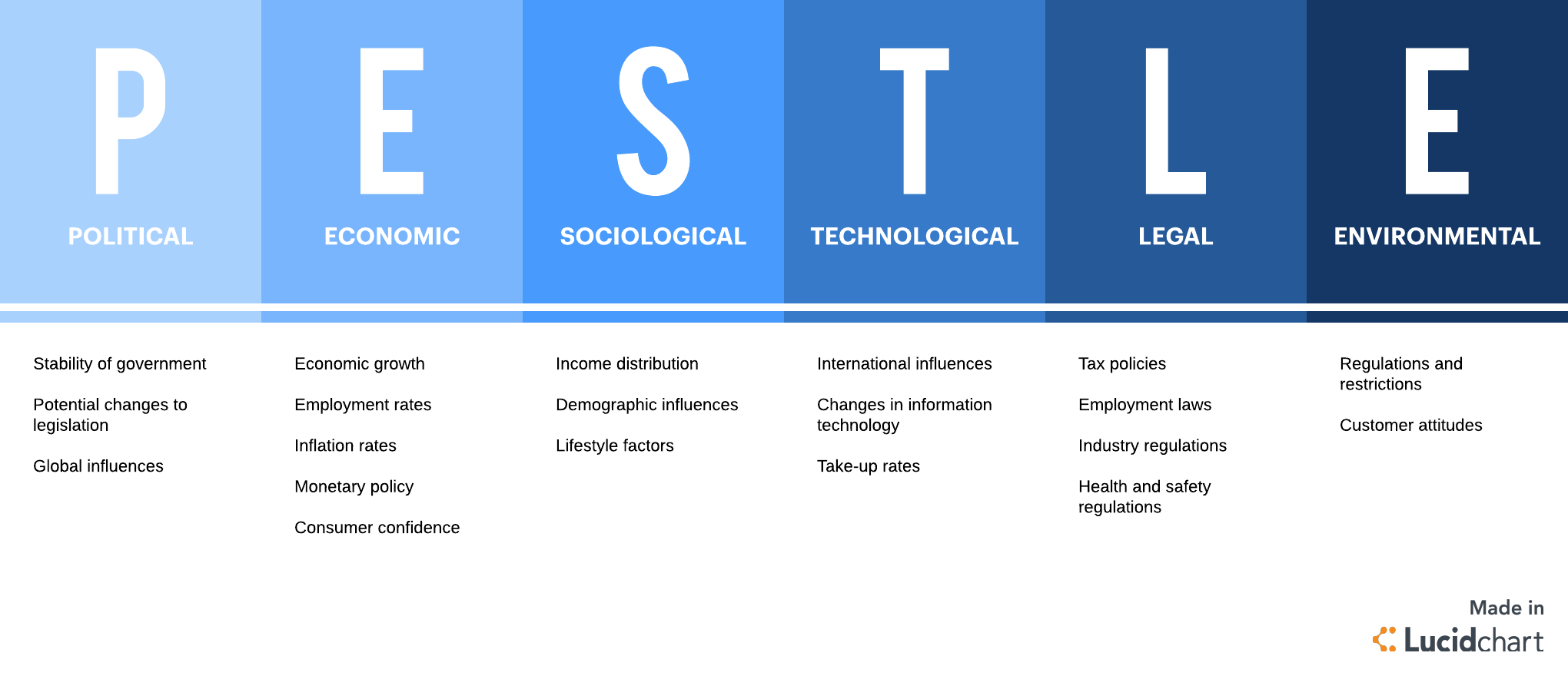Perhaps the most overlooked piece of entrepreneurial wisdom is to do your homework. No amount of enthusiasm makes up for research. So, whether it’s starting a business, launching a product, or beginning a project, it pays in the long run to take the time for a bit of investigation—you’ll either be more prepared for the endeavor ahead or will be able to pivot your plan into something more apt to succeed.
So how do you go about conducting research? SWOT and PEST analysis are two valuable tools that offer valuable insights into your company and its position in the world. These analyses are meant to provide you with an objective look and the information you need to make informed, mature decisions.
If you’re open to using either of these tools but can’t decide which is the most appropriate fit, we’re here to help. Read to discover our own take on SWOT vs PEST analysis and learn how using both SWOT and PEST analysis can help you feel empowered to take on your next project.
What’s a SWOT analysis?
A SWOT analysis stands for:
- Strengths
- Weaknesses
- Opportunities
- Threats
Start a deep-dive into your own company with the SWOT analysis template shown above. The first two letters of the acronym SWOT—strengths and weaknesses—ask you to look at your business's own unique postures. Strengths, or the key differentiators between your company and the competition, could include:
- Your marketing approach
- Your location or equipment
- Your financial resources and investors
- The strength of your internal team
- The quality of your product or service
Weaknesses could include:
- Lack of funding
- The size of your target audience
- Production overhead
- Customer churn
- High employee turnover
- David in IT (just kidding—David’s great)
A full inventory of your internal strengths and weaknesses will show you exactly where to improve and help you understand upcoming challenges.
The next two acronyms—opportunities and threats—refer to factors outside your organization that influence its success. These factors could include:
- Market trends
- Economic trends
- Funding/financial resources
- Demographics of customers
- Political, environmental, and economic regulations
You may need to revisit your strengths and weaknesses after considering them in the context of the external factors influencing your organization.
SWOT analysis example: If your best-selling product is a tartan pajama set, but this season, it’s all about lace nightgowns, that’s a market trend that’s likely to influence the success of your company. On our SWOT analysis template, you'd want to mark that under "Threats" and consider how to adapt accordingly.
When should you use a SWOT analysis?
This type of analysis is best performed when your business is new, is having difficult meeting performance standards without a clear understanding of why, or is otherwise gearing up for a significant change, such as:
- Launching a new initiative
- Revamping internal policies
- Pivoting business direction
- Changing a plan during its execution
A SWOT analysis will help you determine your business’s strengths and weaknesses while allowing you to identify opportunities that your company can use to make bigger profits. Use a SWOT analysis when are trying to determine how both internal and external factors that influence your company’s performance.
Taking the time to do a SWOT analysis can help you identify and then improve your own internal practices and processes before attempting a new venture.
Use our free template to conduct your own SWOT analysis. Or use our SWOT analysis generator.
What’s a PEST analysis?
PEST analysis stands for:
- Political
- Economic
- Social
- Technological
All of these categories represent external factors that could influence your business. For example, within a PEST analysis, you may want to consider:
- How the dominant political party could influence business development, taxes, growth, and trade
- How the stock market, customer confidence, and interest rates could influence your business
- What changes have occurred in your target demographics, ethics, or lifestyles
- What changes have occurred in both your company’s use of technology and your customers’ use of technology
Some individuals use variations of this analysis, such as PESTLE analysis, with the final two letters representing legal and environmental factors.
PEST analysis example: Say that you rely on a certain part that you can only obtain from a company that's located in a country currently experiencing sanctions from your government. It’s worth examining how the loss of that manufacturer could impact your business’s productivity. You would file this concern under "Political" on your PEST analysis template.
When should you use a PEST analysis?
Use a PEST analysis to evaluate how the decisions your company makes or the direction in which your company wants to move fits in within the very real influencing factors of the outside world. It can identify threats before they impact your company and help you understand when to avoid starting projects that are likely to fail based on external factors. Through a PEST analysis, you’ll be able to make an objective decision about any new venture, especially if it is entering a new country, region, or market.
To compare, PEST analysis will only examine external factors that could affect your business (although it will help you think specifically about different areas of interest), while SWOT analysis considers both internal and external factors.
To conduct a PEST analysis, follow our directions and get a free template.
SWOT vs PEST: Which is better?
The SWOT and PEST analysis styles both have positive and negatives, so the question isn’t so much a matter of which type of analysis is best for your company, but rather how you use the analysis and put its discoveries into practice.
Instead of one versus the other, we recommend first conducting a PEST analysis and then conducting a SWOT analysis. That’s right—do both.
Here’s why: A PEST analysis will provide you an objective look about the world in which your business exists, and it’s especially useful to understand both your own country and the countries on which you rely to do business.
After the PEST analysis is completed, it’s time to conduct a SWOT analysis. This will help you understand your company in context of the outside world, including weaknesses that you may not have considered weaknesses before the PEST analysis. The same can be said of strengths: You may find that what you considered a strength in your own country before conducting a PEST analysis is actually a weakness in a different market.
Ready to start your SWOT and PEST analysis?
Open a template in Lucidchart.
It’s worth going through the task of conducting both analyses before embarking on a new venture, especially if the new venture puts your company at risk. Lucidchart makes the task less arduous because we have templates to help you start quickly, plus you can easily share your document with stakeholders and other team members so everyone can contribute their thoughts and you can reach a decision faster.
The more you can foresee potential difficulties and the more honest you are about your own company’s weaknesses, the better you can outperform the competition.
A word of warning: The analyses are only as good as the person conducting them and the information at hand. They will not be perfect, and they will not be accurate for years to come. Both SWOT and PEST analysis only provide you relevant information about current environments, which means—steel yourself—you’ll need to conduct more SWOT and PEST analyses in the future. But the better you become at them, the stronger your processes and position in the market will be.
About Lucidchart
Lucidchart, a cloud-based intelligent diagramming application, is a core component of Lucid Software's Visual Collaboration Suite. This intuitive, cloud-based solution empowers teams to collaborate in real-time to build flowcharts, mockups, UML diagrams, customer journey maps, and more. Lucidchart propels teams forward to build the future faster. Lucid is proud to serve top businesses around the world, including customers such as Google, GE, and NBC Universal, and 99% of the Fortune 500. Lucid partners with industry leaders, including Google, Atlassian, and Microsoft. Since its founding, Lucid has received numerous awards for its products, business, and workplace culture. For more information, visit lucidchart.com.



